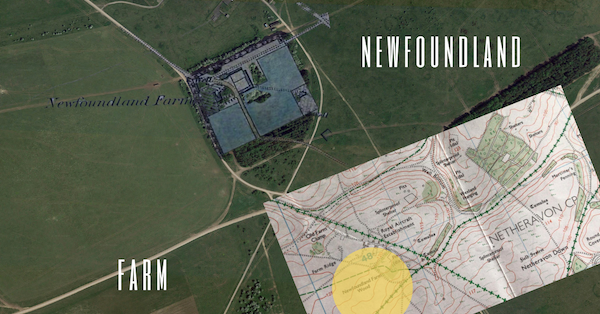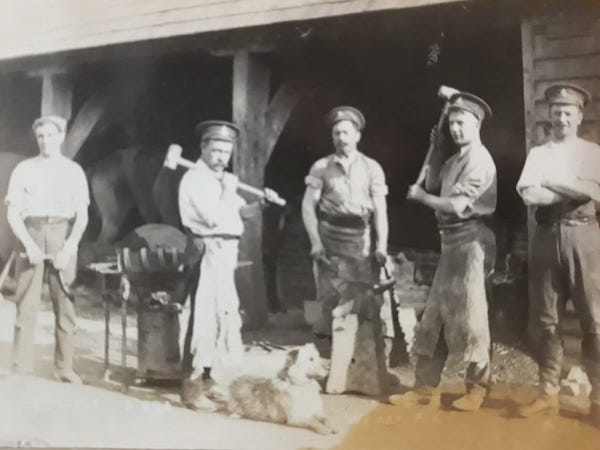Newfoundland Farm appears to date from the 1830s as a downland farm for the rearing of sheep, probably part of what is now known as Wexland Farm
It was situated at Well Bottom, by Wexland Hanging. It is interesting as there are records in the Gloucester Archives which show that there were plans in 1863 to build new farm buildings at a quoted cost of £884. They were to be “a Cart Horse Stable, Barn, Piggeries, Chaff House, Nag Stable and Coach House”. The builder was to be Benoni Mullings from Devizes. The new barn and chaff house imply that there was to be an increase in arable land under cultivation.
The instructions are detailed and include this for the barn:
“…the walls are to be weather boarded externally in yellow pine, painted over “with good tar, to every gallon of tar add half a pint of resin and one knob of quick lime all boiled together and used whilst hot”. The floor is to be supported on sleepers and joists of English oak – the “mows” (raised storage areas of the barn to guard against rats) to have an elm floor, with oak floor boarding elsewhere, and 4 pairs of sliding doors.”
The stable includes a harness room and evidently adjoins the chaff house, with communicating door. The hay loft above is to have elm floorboards, a hay-drop over the mangers and two pitching doors, one on either side of the building. It is to be reached by a fixed ladder and trap door. These plans are very similar to buildings existing at Mill (formerly Newton) Farm, also a Hicks Beach farm, until demolition in 1974.
The area of land under cultivation in Britain increased from the mid 1850s until the period of agricultural depression towards the end of the century. Large estate farms brought marginal land into cultivation as well as ploughing up pasture land. The thin soiled bakelands (or beakes) of Salisbury Plain were part of this development, and included Newfoundland. Partly due to this expansion, arable farmers had to contend with lower prices, which were also influenced by a series of poor harvests in the late 1870s, and an influx of cheap American grain. In the ensuing late C19th agricultural depression many left working on the land, and some emigrated. Much arable reverted to grassland.
Newfoundland was tenanted until 1892 and then farmed in hand by the estate for two years. The farm had by then reverted to grassland and the buildings were converted into training stables.
Census information:
In 1881 Newfoundland was busy. There lived:
Thomas Clements aged 34, a shepherd, his wife Martha, sister Elizabeth Stone and daughter Eliza aged 10.
Charles Amor aged 34, a carter, his wife Elizabeth and their four children.George Waite aged 66, the farm manager, and his wife Ann, their son aged 17, an agricultural labourer and a granddaughter aged 12.
Thomas Eyres aged 44, an agricultural labourer, his wife Martha and their 7 children. The two eldest sons aged 15 and 13 were employed as carter and plough boy.
The 1891 census mentions Newfoundland Bake where lived Francis Sheppard aged 45, a shepherd, and his wife Mary Ann. Both she and their daughter Ellen were agricultural labourers (this was a wide term) and their son of 16, also a shepherd. Another daughter was 14.
So within a hundred years Newfoundland had changed from an area of sheep grazing, then to arable, and then to military training. This pattern was repeated all over Salisbury Plain. There is little or no trace of any of the field barns, farmyards or cottages which once were scattered all over.
By 1911 there were dozens of soldiers encamped there, mainly field artillery, with officers using the cottages. No trace now remains of the buildings.
Thanks to the Wiltshire Buildings Record for help with this article.



